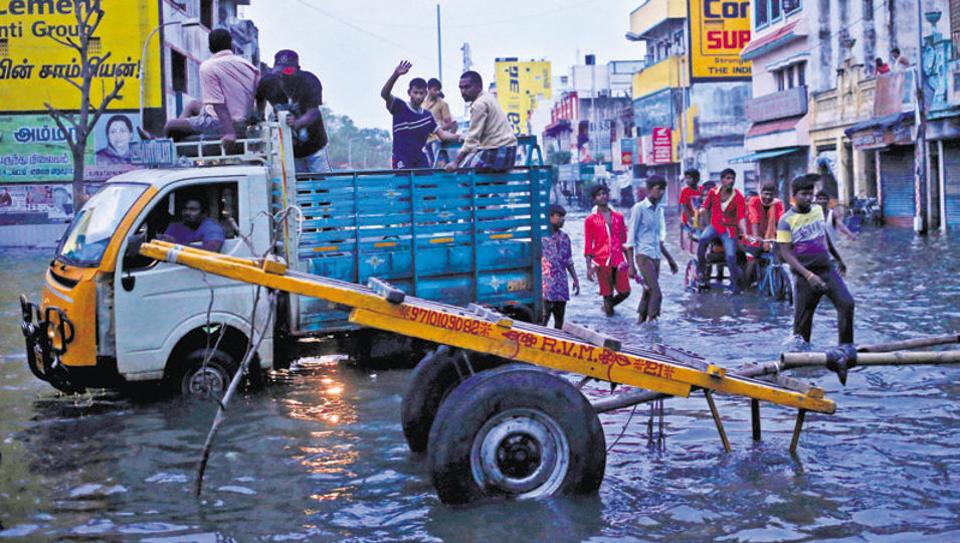India is acknowledged to be at ground zero of the global warming challenge. Not only is our country the third largest producer of greenhouse gases, and therefore a significant contributor to the problem, it is also expected to be one of the major victims of global warming.
The major factor in climate change — global warming — is now expected to present bigger problems sooner than expected. The Intergovernmental Panel on Climate Change (IPCC) in its October 2018 report warned that the swifter pace of global warming makes the earlier proposed trajectory towards two degrees Celsius of average global temperature increase by the end of the century untenable. The consequences we are already witnessing — higher frequency of extreme climatic events, flooding of coastal areas, disruption of cropping patterns and agriculture, and extremely high temperatures that make the outdoor activity difficult — will become far worse.
India is acknowledged to be at ground zero of the global warming challenge. Not only is our country the third largest producer of greenhouse gases, and, therefore, a significant contributor to the problem, it is also expected to be one of the major victims of global warming. The unprecedented floods in Chennai in 2015, for instance, which impacted all strata of society and generated massive insurance claims, brought home the risks of leaving climate change unaddressed.
Yet, despite the threats posed by climate change to the Indian economy, and the many examples we already have of environmental degradation on a national scale — for instance, the fact that India is already host to 14 of the 15 most polluted cities in the world (as per the World Health Organization’s global air pollution database), or the fact that water scarcity is a widespread problem across the country — the environmental sustainability agenda was not a major electoral issue in the last general elections.
It is worth asking why. It cannot be the case that environmental issues are not important to local communities. One just has to see the outcry against air pollution every winter in Delhi, to understand that the average citizen understands the hazards, especially the impact on good health and life expectancy of children. In parts of the country such as the tribal belt, concerns around forest preservation, encroachment, mining, and the displacement of communities are critical election issues.
Perhaps this presents an opportunity. If local communities value their quality of life, and believe that quality of life is suffering or is under threat from a range of often interconnected environmental and developmental issues, but no political party has seen fit to embrace a powerful and explicit environmental agenda and show leadership on these issues, is there hope that some political organisation may step into this space? In other words, is India ready for its version of a Green Party?
Recent political developments, in India and outside, suggest the time may be right for this. First, outside India, climate change is already featuring as a major campaign issue for the front-runners for the Democratic nomination in the forthcoming US Presidential elections. It is also worth noting that one of the largest gainers in the recent elections to the European Parliament were the European Greens; with 10% of the total seats, they have emerged as the new kingmakers.
In India, the key driver for change may be the morass in which the principal national opposition party, the Indian National Congress, finds itself. Other opposition parties have their backs to the wall, with the recent general election results suggesting that there has been a broad rejection of the caste based formulations that many of them represent. There is an opportunity to create a unifying agenda that can bring powerful elements of a social, economic and developmental philosophy together in a political platform, which can then offer an alternative narrative to that crafted by the currently dominant Bharatiya Janata Party. Is it time for a “Green Party of India” to emerge?
Key elements in such a party’s manifesto could include the determination to prod corporate India on the path of sustainability; the resolve to embrace leap-frog technologies in areas like electric mobility, and replicate the kind of success India saw by embracing mobile communications technology and leap-frogging the fixed-line era; the determination to support agricultural communities with capital and risk-taking ability; the commitment to increase dense forest cover to 33% of land use, by offering a new deal to forest-dwellers; universal health care; support for community enterprise; major investments to secure or reclaim our national heritage, including languages ranging from Sanskrit to Santhali; and myriad other commitments to allow the diversity of our country to be recognised and flourish alongside strong economic growth that does not marginalise any community or insidiously differentiate “losers” and “winners”.
So, maybe the time has come to create the “Bharatiya Dharaniya Vikas Party” (BDVP), which translates to “The Sustainable Development Party of India”. Any takers?
The views expressed are personal.
The article was originally published in Hindustan Times.
Image- The unprecedented floods in the capital city of Tamil Nadu, Chennai, in 2015 brought home to all strata of society the risks of leaving climate change unaddressed(REUTERS)

